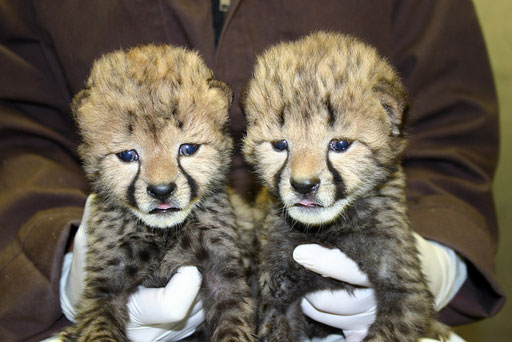
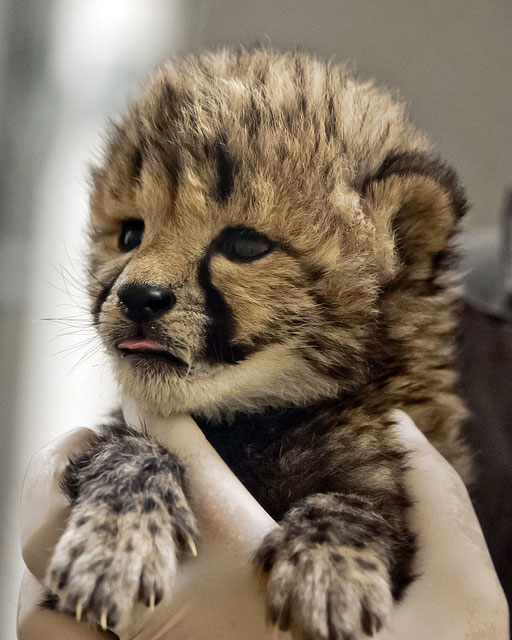
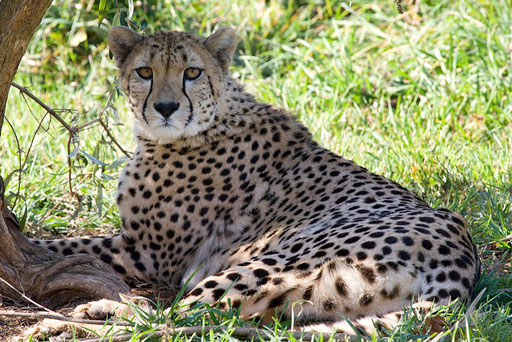
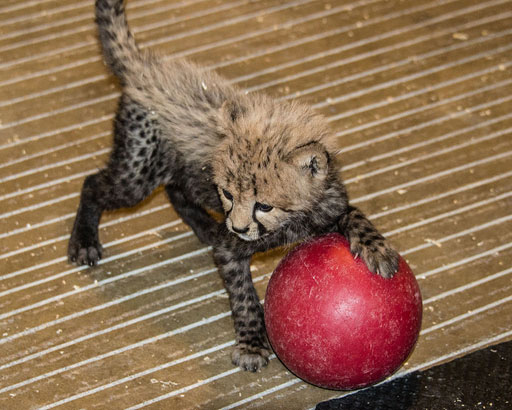
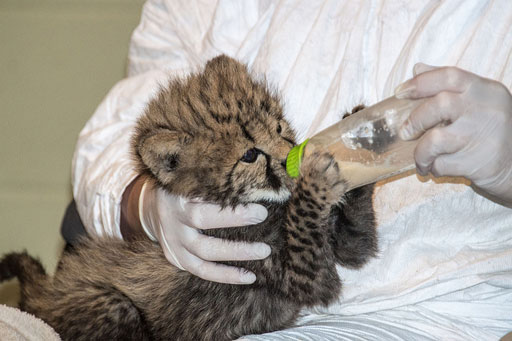
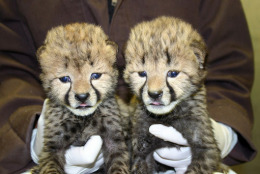
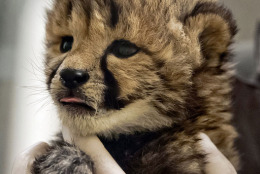
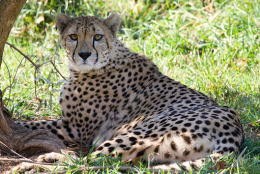
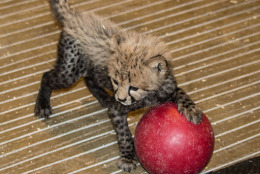
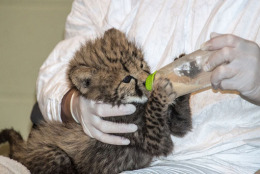
WASHINGTON – The National Zoo’s two cheetah cubs received a clean bill of health from veterinarians.
The cubs endured a complete physical exam, including checks of their heart, lungs, mouth, eyes, legs and feet. Zoo vets also took blood samples and observed the cubs’ mobility.
Both cheetahs are gaining weight steadily, according to the Zoo. Both the male and female cub weigh about four pounds each.
The cubs are said to be very active, and to spend most of their day jumping, running and chasing one another in their enclosure.
“They’re pretty goofy when they run because their bodies haven’t caught up to their leg size,” said Wayne Millner, the cheetah keeper.
The cubs had a non-traditional entrance into the world when Ally, a five-year-old cheetah and first-time mom, gave birth to the first cub, a male, on April 23.
However, instead of nursing and cleaning the cub, she abandoned him, which is relatively common for first-time mothers under human care, according to the Zoo’s website. Cheetah keepers moved the cub to the veterinary hospital to be treated for severe hypothermia.
When Ally suddenly stopped having contractions hours later, SCBI head vet Copper Aitken-Palmer heard additional heartbeats and performed a radiograph to determine that three cubs remained. She performed a C-section, a procedure rarely used on cheetahs and one that cubs do not often survive.
A team of veterinarians, keepers and scientists worked for three hours to resuscitate the three cubs, performing CPR, administrating medications and rubbing the cubs to dry and warm them. One of the three cubs, a female, did survive.
The siblings have lived at the Zoo’s Cheetah Conservation Station since they were moved from the Smithsonian Conservation Biology Institute in Front Royal, Va, on May 18.
The cubs will make their public debut this summer at the Cheetah Conservation Station.
WTOP’s Megan Cloherty contributed to this report.
Follow WTOP on Twitter.
(Copyright 2012 by WTOP. All Rights Reserved.)







